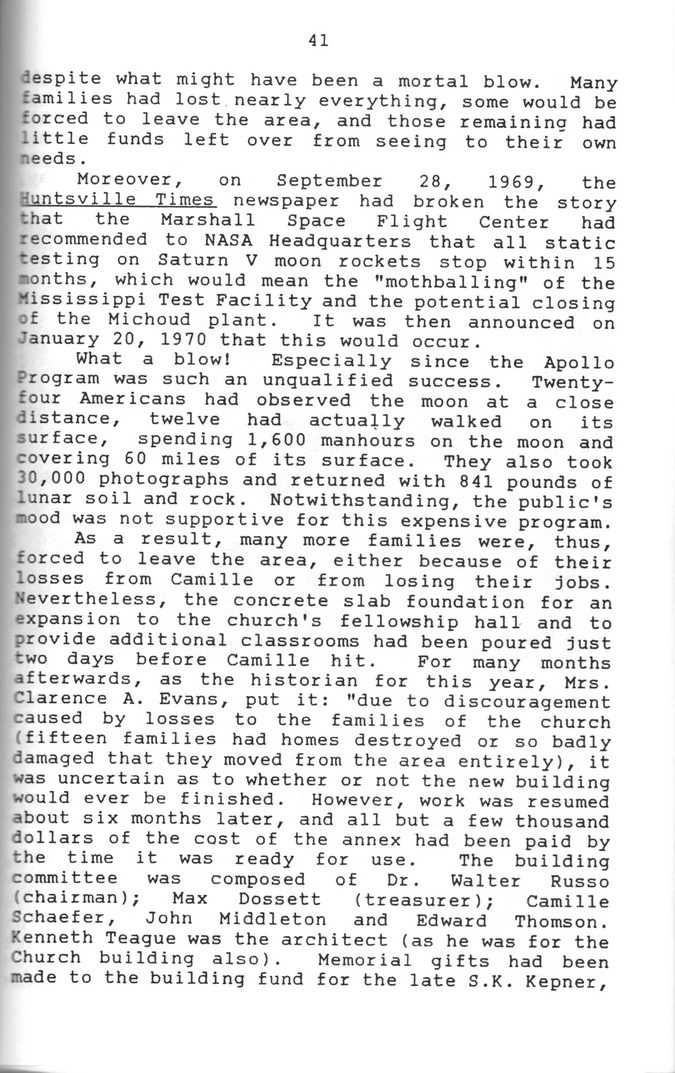This text was obtained via automated optical character recognition.
It has not been edited and may therefore contain several errors.
41 despite what might have been a mortal blow. Many families had lost nearly everything, some would be forced to leave the area, and those remaining had little funds left over from seeing to their own needs. Moreover, on September 28, 1969, the Huntsville Times newspaper had broken the story that the Marshall Space Flight Center had recommended to NASA Headquarters that all static testing on Saturn V moon rockets stop within 15 months, which would mean the "mothballing" of the Mississippi Test Facility and the potential closing of the Michoud plant. It was then announced on January 20, 1970 that this would occur. What a blow! Especially since the Apollo Program was such an unqualified success. Twenty-four Americans had observed the moon at a close distance, twelve had actually walked on its surface, spending 1,600 manhours on the moon and covering 60 miles of its surface. They also took 30,000 photographs and returned with 841 pounds of lunar soil and rock. Notwithstanding, the public's mood was not supportive for this expensive program. As a result, many more families were, thus, forced to leave the area, either because of their losses from Camille or from losing their jobs. Nevertheless, the concrete slab foundation for an expansion to the church's fellowship hall and to provide additional classrooms had been poured just two days before Camille hit. For many months afterwards, as the historian for this year, Mrs. Clarence A. Evans, put it: "due to discouragement caused by losses to the families of the church (fifteen families had homes destroyed or so badly damaged that they moved from the area entirely), it was uncertain as to whether or not the new building would ever be finished. However, work was resumed about six months later, and all but a few thousand dollars of the cost of the annex had been paid by the time it was ready for use. The building committee was composed of Dr. Walter Russo (chairman); Max Dossett (treasurer); Camille Schaefer, John Middleton and Edward Thomson. Kenneth Teague was the architect (as he was for the Church building also). Memorial gifts had been made to the building fund for the late S.K. Kepner,

First Presbyterian Church History-of-the-First-Presbyterian-Church-45